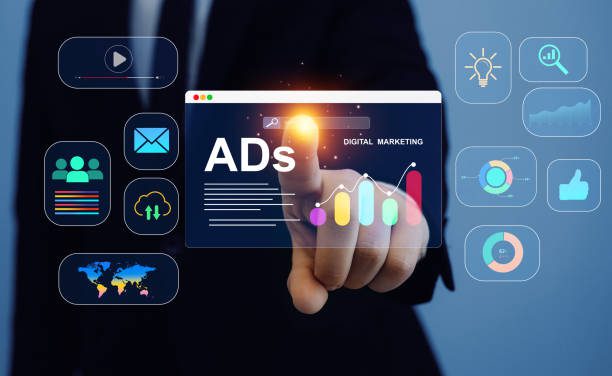
The Digital Advantage: Why Modern SEO Outpaces Traditional Advertising in Every Business Arena
In a world increasingly ruled by algorithms, consumer behaviour, and instant digital access, companies face a defining choice: continue investing heavily in traditional marketing methods like television, radio, and billboards, or shift their resources to modern, data-driven strategies like Search Engine Optimisation (SEO). While the former may still hold nostalgic or broad-reach appeal, it is the latter that is consistently proving to be more impactful, measurable, and adaptable — especially for companies aiming to attract new customers, grow in competitive markets, or maximise value from existing clients.
The Changing Landscape of Customer Acquisition
In the past, businesses would compete fiercely for prime-time television slots, morning radio mentions, and high-traffic billboard spaces. These mediums promised reach, visibility, and status. However, they were also expensive, untargeted, and notoriously difficult to measure in terms of ROI.
Contrast this with modern SEO. Search Engine Optimisation enables businesses to reach potential customers at the precise moment they express interest — through search queries on platforms like Google. When someone searches “best vegan café in Manchester” or “affordable web design London,” they are not passively absorbing information; they are actively seeking solutions. Companies with a robust SEO strategy appear at the top of these results, capturing ready-to-convert traffic.
Modern SEO not only helps businesses get found, but it ensures they are found by the right people. Unlike a radio ad that plays to thousands but resonates with only a handful, SEO tailors exposure to searchers with specific intent. For customer acquisition, this precision is invaluable.
Gaining the Edge in Competitive Markets
For businesses operating in saturated industries, standing out can be a monumental challenge. Traditional marketing often relies on budget supremacy — whoever can afford the most ads, wins. But SEO levels the playing field. With the right approach, smaller or mid-sized companies can outperform larger competitors on search engines through high-quality content, keyword targeting, and technical optimisation.
SEO also provides ongoing insight into customer behaviour and market trends. With tools like Google Search Console and SEMrush, companies can continuously refine their strategy to stay ahead of competitors. Billboards cannot tell you who looked at them, for how long, or whether that glance led to a sale. SEO, on the other hand, can tell you what people searched for, how they landed on your site, and what they did next — enabling a cycle of constant improvement.
Moreover, SEO strategies can be hyperlocal or globally scaled. Whether a company is targeting foot traffic in Bristol or online customers across Europe, SEO offers the flexibility to tailor campaigns to specific geographies, demographics, and devices — something traditional advertising can only approximate at great cost.
Increasing Customer Lifetime Value Through SEO
Marketing is not solely about finding new customers — it’s also about retaining and extracting more value from existing ones. While a television advert might momentarily remind a past customer of a brand, SEO can nurture ongoing engagement through content marketing, blog updates, how-to guides, and tailored landing pages.
For example, a company selling home fitness equipment can create an SEO-driven content hub that provides workout tips, equipment maintenance advice, and healthy recipes. Not only does this support SEO efforts, but it keeps existing customers engaged, informed, and more likely to make additional purchases or refer others.
Through search data, businesses can also identify what their current customer base is still searching for — gaps in the market or recurring needs — and address these directly. SEO turns customer behaviour into actionable intelligence.
Additionally, SEO integrates smoothly with email marketing, remarketing campaigns, and loyalty programmes, all of which contribute to increased translation value (conversion and upsell potential) from current customers.
The Measurable, Cost-Effective Future of Marketing
Perhaps the most compelling argument for SEO over traditional media is measurability and cost-effectiveness. While a TV ad might reach millions, the business is often left guessing how many converted. SEO provides granular data on every aspect of performance: impressions, click-through rates, bounce rates, conversions, and more.
Furthermore, while the upfront cost of SEO may involve technical audits, content creation, and link building, the long-term returns far exceed the often short-lived impact of a radio or TV spot. SEO builds equity over time; content created today can generate leads for months or years to come.
The Verdict
As consumer behaviour shifts more decisively into the digital realm, businesses clinging solely to traditional marketing channels risk falling behind. While there may still be a place for well-crafted TV ads or clever billboard placements, they no longer hold the strategic advantage they once did.
Modern SEO is not just a marketing tactic — it is a foundational business strategy. Whether your goal is to attract new customers, gain a competitive edge, or increase the value of your existing client base, SEO delivers unmatched precision, performance, and adaptability. In the battle between old and new, it’s clear which side the future belongs to.
Connect with the Author: http://linkedin.com/in/infoforte
Book Your FREE Intelligent Content Strategy Session: https://jimmcwilliams.youcanbook.me